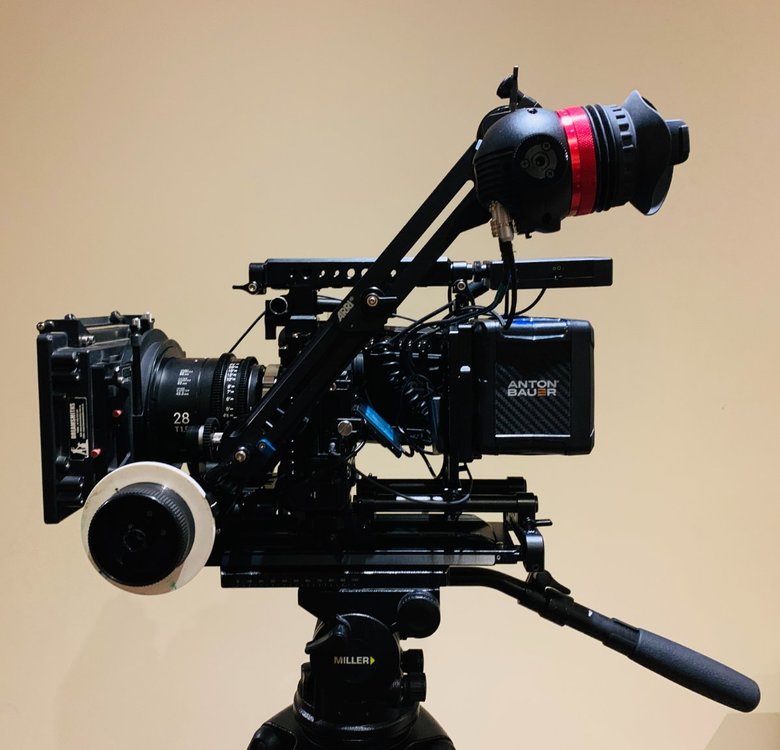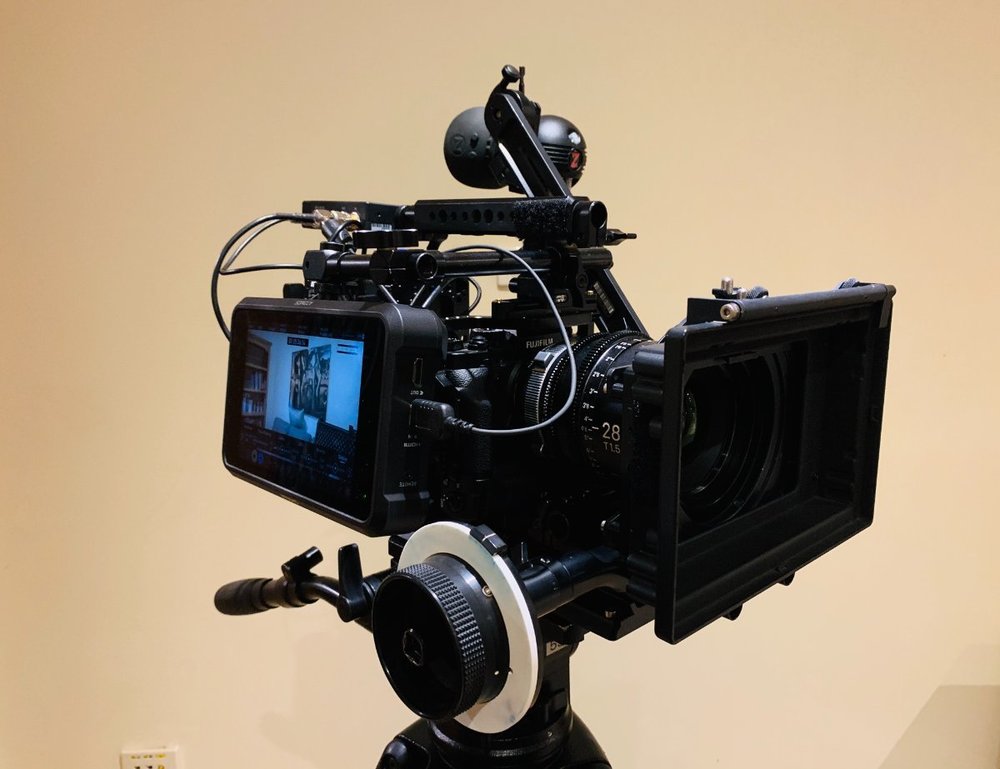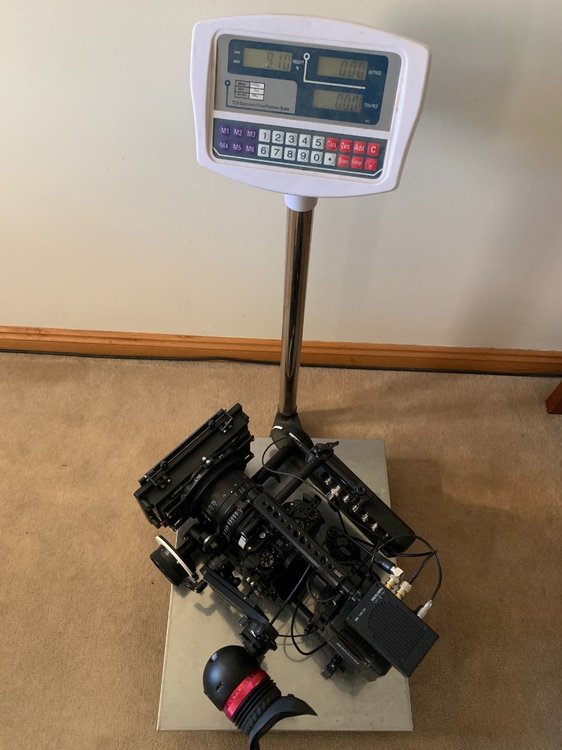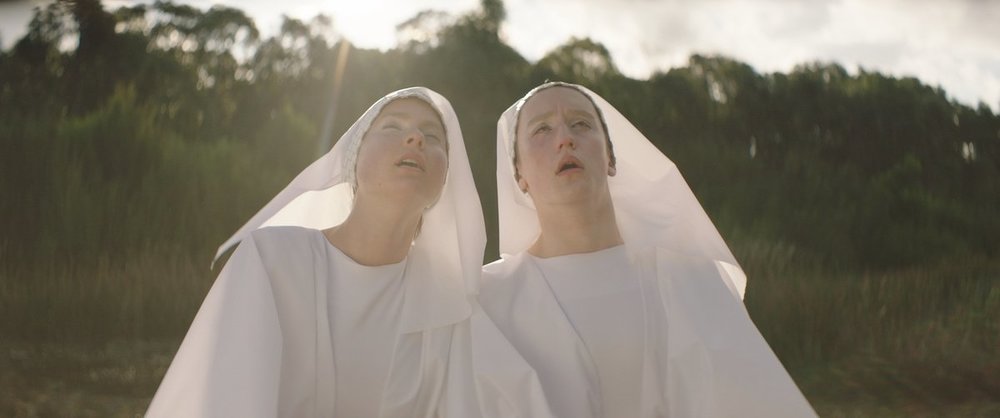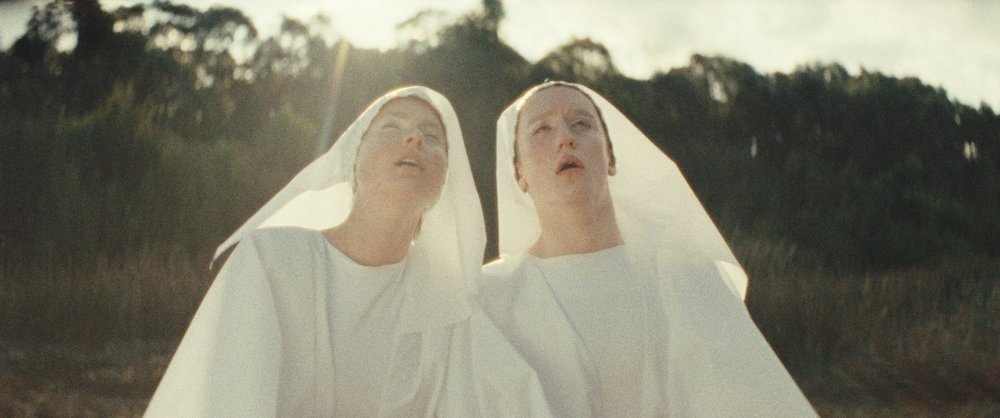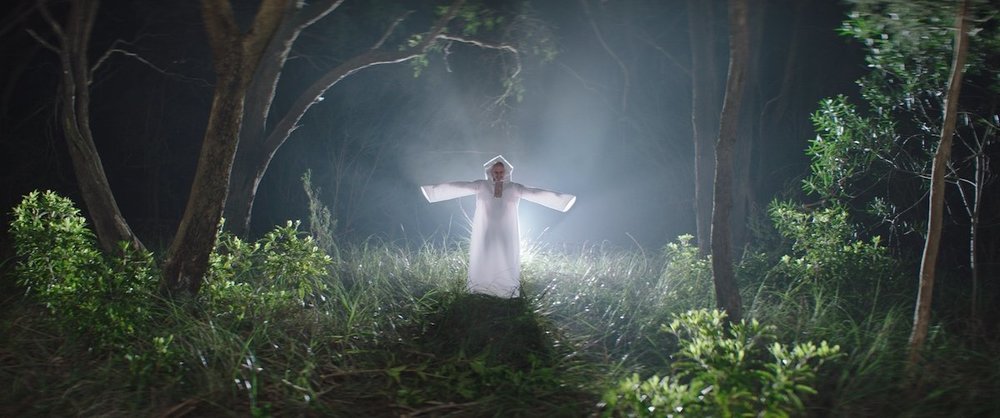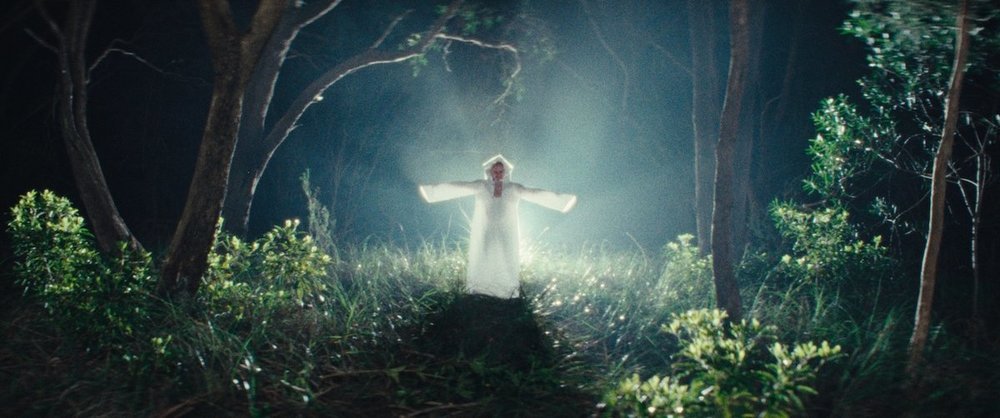-
Posts
1,536 -
Joined
-
Last visited
Everything posted by Mark Kenfield
-
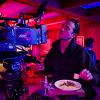
Is This Camera Suitable for A Feature?
Mark Kenfield replied to DorSinai's topic in General Discussion
I think you're making absolutely the right move there DorSinai. Good luck with it ? -

Is This Camera Suitable for A Feature?
Mark Kenfield replied to DorSinai's topic in General Discussion
This is a Fujifilm X-T3 rigged up for conventional narrative prodution, with all the basics (EVF, Monitor, Mattebox, Wireless Video, Follow Focus, v-mount power distribution, and some lightweight bracketry out the back end, to stop the whole thing tipping over whenever you set it down): Did it work? Yes. And (to be fair) it worked reasonably well because it was so intricately rigged out to provide all of the functionality we'd normally need on set. Would I ever do it again? I certainly hope not. You're reliant on a single, tiny, Micro-HDMI output for all of your video outputs (which even reinforced with a cable clamp on a camera cage, still isn't all that sturdy), and trying to access the camera's internal menus and controls (with all of that gack around the body) is fiddly at best. On the plus-side? You get a lovely 6k sensor, downsampled into a crisp 4k image - with decent dynamic range, and 10-bit recording (at 4:2:0 internally, and 4:2:2 if you record externally). So there's little to complain about with the image quality you can muster with the camera, no one will question the results on that front - it's really just a question of form and function. A little mirrorless like this will bring you a lot of grief if you're trying to work within a conventional production style. That said, if you're working differently - pulling your own focus, doing everything handleheld, running the camera solo effectively, well then maybe it'll be fine. There's plenty of people out there doing beautiful work with barebones mirrorless cameras - it all just comes down to the workflow and the needs of the specific production you're working on. -

Why actors' faces in some new films look so waxy?
Mark Kenfield replied to Petr Kvapil's topic in General Discussion
Very underwhelmed by that LOTR trailer, it looks like the cutscenes from a video game. -
Hi guys, I remember being told that light meters were safe to pass through airport security x-rays, but does the same go for a spectrometer like the C-800? They’re bloody expensive, so I don’t want to risk damaging it. Cheers, Mark
-

4x5.65 thin filter frame for nets.
Mark Kenfield replied to Steven Buckwalter's topic in Camera Assistant / DIT & Gear
perhaps look to have something 3d printed? -

Light to simulate hard sunlight
Mark Kenfield replied to Sairaj Batale's topic in Lighting for Film & Video
Actually, focussing a fresnel into it's tighter "spot" beam, makes the shadow cuts LESS sharp. You get more lumens, but shadows become softer. Full flood is where you get the sharpest cuts. -

The New Canon EOS R5 C camera. Anyone Interested?
Mark Kenfield replied to Max Field's topic in Canon
Sony FX3 or Canon C70 are the two obvious candidates. Both have a single full-sized HDMI output and swivel screen. The Sony has better AF and the larger sensor, but the Canon has internal NDs. There's a size penalty with the Canon if absolute tininess is the goal, but the internal NDs would be a big help for general usability. The FX3 has multiple 1/4"-20 mounting holes on it, which means (unlike every other tiny mirrorless camera in existence) you can actually attach a cage to it rigidly. To which you can then actually attach a baseplate or tripod plate RIGIDLY (a hugely underated feature that's basically essential for any real motion picture work). The C70 is a tiny video camera, so it has multiple holes on the bottom by default. Those are the two I'd be looking at, both hugely impressive with your particular goals in mind. -

The New Canon EOS R5 C camera. Anyone Interested?
Mark Kenfield replied to Max Field's topic in Canon
Who wants to deal with a single micro-HDMI output in this day and age? Such a significant headache for almost everything. So it strikes me that there are far more appealing options in the mirrorless space at present. -
And be absolutely sure that you want to shoot 500 ISO stock outdoors in the daytime. Unless you want to stop down the lens a lot and work with a very deep depth of field, the amount of ND you're going to have to put in front of the lens, is going to make looking through the viewfinder really hard. It's difficult even with 250D at times.
-
Perhaps try reaching out to the Mexican Society of Cinematographers (AMC)? They might have a Facebook group, or some other forums for local chat about the craft.
-
It's not the perforations of the film that you're seeing flicker, it's the mirror reflex of the shutter passing across the gate. As for seeing the flicker, contrast is the main thing that makes it apparent. So outdoor, with bright skies in the frame, it will be much more apparent than it is on a dimly-lit (or even just normally lit) interior. I've never known anyone to use a video tap just to avoid the flicker. Personally I think the flicker is a very reasonable trade off for the HUGE BOON to the camera operator, of looking directly through the lens (with no miliseconds of electronic delay, like we face with digital). It may be a subtle difference for many (or even most things), but anytime to need to follow and actor's motions precisely (standing up quickly, jumping, things like that) realtime viewing makes a huge difference to how effectively an operator can operate.
-

Cine glass decisions (Schneider Xenon FF prime lenses)
Mark Kenfield replied to Enginn Heima's topic in General Discussion
100% go with a PL-mount for manual glass. A simple adapter and you can use them with your Sony camera, but they'll also adapt to any other camera you might encounter these days - if you go e-mount you'll be stuck. So definitely stick with a PL-mount, it's the only sensible option. As for the Xenons, they certainly wouldn't be high up in my personal choices, but they're perfectly decent lenses (they have a fair bit of CA, but some CP.2 focal lengths have that too, and the DZO appear to as well). Xenon's will be much easier/safer to service from France than the DZOs I'd imagine, so that should certainly be a consideration. At the same time, the Xenons are so rare, it might be worth calling Schneider directly to enquire about the availability of spare parts for the lenses (to check that you'll be covered for years to come). That's one area where the CP.2s would hold a lot of appeal to me over the other options. 2500 euro per lens does sound like a very reasonable price for Xenons, though if you are willing to buy used, you can absolutely find CP.2s for that sort of money (or less) particularly if you buy them in a set. -
A fan with straight stripes on it is another common test to measure the comparative skew from different cameras.
-
I own Dehancer's halation plugin and have trialed their full software, and I compared it side-by-side with Filmbox, and (frankly) it wasn't even close. And that's comparing the various effects (colour, grain, weave, dust) both individually and combined. While Dehancer is certainly a step up from what we had earlier in Filmconvert, Filmbox stomps all over it. You play the clips back to back and one looks like film, and the other looks like film emulation (and that's even if you neutralise the colour differences entirely, by excluding them from the comparison). Borrow a Mac and try out the free Lite version. I think you'll see what I mean.
-
Well, yes. That's kinda the whole reason for giving my word. ?♂️ But here are a couple of samples (Video Village do a "lite" version of the plugin which is free, and can be used on footage up to 1080p in resolution, it just gives you a single, full S16mm and S35mm preset, with no adjustability of the various parameters). These are the same shots with just an Arri Rec709 LUT applied, and then Filmbox's S16mm emulation from the Lite plugin applied (no other adjustments): In motion, with the halation, grain, gate weave and occasional dust-spec applied. It's remarkably convincing.
-
It's like $129 or something for a three month licence. Which is plenty of time to finish the grade on a project. Compared to the cost of doing a film-out or shooting on negative, that's beyond neglible. And the results far outstrip any other digital film emulation I've encountered to-date (and I've tried most of them). For anyone wanting a "film look" for digital material, I don't think there's any better (and certainly any cheaper) options. ?♂️
-
I think the S16mm on Alexa is the best digital option you have. I'd do that, and then get a licence for "Filmbox" (which is an EXCEPTIONAL film emulation plugin for Davinci resolve), it can even export monitoring LUTs that you can use in camera while you're shooting. That combination will give you a shockingly close digital emulation of actual S16mm. I've never seen anything come as close.
-
Do let me know if you can get it up and running Daniel! Would be a brilliant facility to have access to here in Melbourne. Are you thinking to offer both film outs and scanning to "film in"? (aka the Dune Recipe)
-
I'm also in the reformed 2.39er camp these days. So many cinemas screens now vertically shrink down (rather than expand outwards into) a 2.39:1 ratio, that the "widescreen" effect nowadays, is frequently a smaller, less immersive experience than conventional 1.85:1. It's even got to the point that I've started to become frequently irked by series shot exclusively for TV screens (on streaming platforms), that have elected to shoot wider aspect ratios. You're only ever seeing these things on your TV at home, and they're giving you a smaller, less immersive image (with black bars at the top and bottom). I've always loved the immersion of a big IMAX screen, and I think it's hard to deny, that a larger overall image, seems to have a more engaging effect for most things.
-
Teradek recievers can take 3D LUTs (if your client monitors don't have them). A bunch of onboard monitors will also passthrough LUTted images as well these days.
-

Portrait of a Lady on Fire
Mark Kenfield replied to Dom Jaeger's topic in On Screen / Reviews & Observations
I've been meaning to check this one out for a while. I've heard only good things. -

Dune : Alexa LF to 35mm to DI
Mark Kenfield replied to Gautam Valluri's topic in On Screen / Reviews & Observations
I think it's highly possible (and reasonable) that they'd separate the grades for the trailers (which will mostly be seen online) from the filmout used for the DCP - which actually has enough bitrate to show the grain structure, without it being compressed into mush. I've started doing the same on my own meagre projects, for exactly that reason. -

Dune : Alexa LF to 35mm to DI
Mark Kenfield replied to Gautam Valluri's topic in On Screen / Reviews & Observations
Interesting. Knowing Greig, it'll look spectacular regardless, but when we now have flim emulation software as exceptional as "Filmbox" - which can make properly exposed digital, almost indistinguishable from real, scanned celuloid. It seems unnecessary to go to the extra expenses/trouble.




